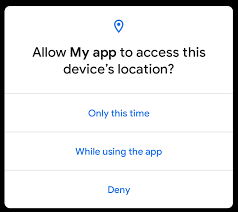Android apps come in all shapes and sizes and do all manner of things. As such, depending on the app, it may request access to specific parts of your phone, whether it be your data, photos, camera, microphone, location, and so on. These are also recognized as “permissions” and apps, when they’re established for the first time, usually demand permission.
This also enables users to get an idea of what kind of access an app is trying to gain, where more suspicious apps might request for things that they shouldn’t. That being said, if one day you decide that maybe you don’t want this app to access your location, how do you do that? If you need to figure out how to control your Android app’s permissions, next check out the steps here.

Depending on your Android phone, sometimes the plan to reach your app’s permissions might be different, but frequently speaking, they are in the Settings app.
1. Launch the Settings app
2. Go to Apps > Permissions
3. Select the app you want to change the permissions on

4. Choose the permissions you want it to have, whether it be access to your phone’s camera, GPS, and so on
5. Repeat the process above if you want to make further changes to the app’s permissions
That being said, we should warn you that sometimes adjusting an app’s permissions can cause it to function incorrectly. For example, an app like Google Maps that does not have access to your phone’s GPS will not be able to work. Also, apps like Instagram that will need access to your photos and camera will also not function properly if you revoke those permissions.
Sometimes, certain permissions can tell if an app is being suspicious. For example, if you just downloaded a calculator app, technically it shouldn’t require you to grant it permission to your location or photos, so if the app asks for that, then you have to ask yourself why does it need it?
This isn’t to say that all apps that request for the odd permissions are bad or questionable, but it could be something to keep an eye out for.


